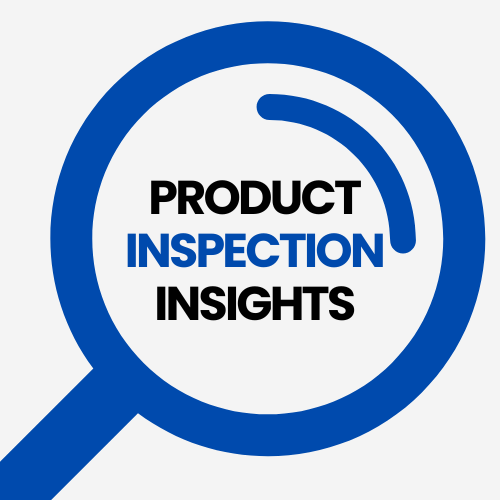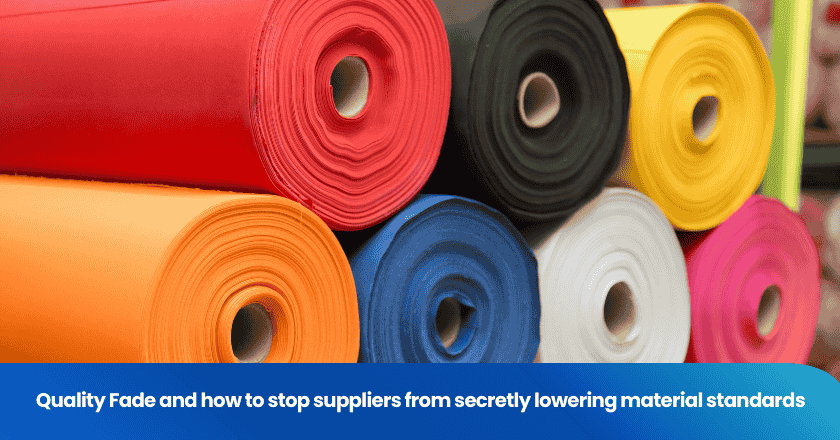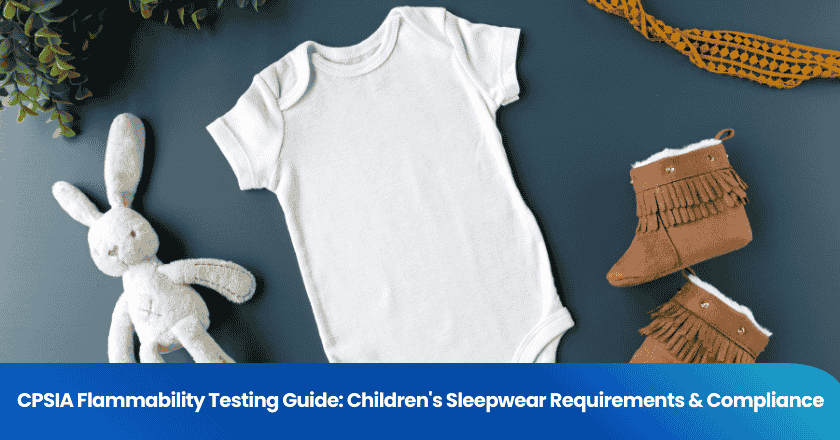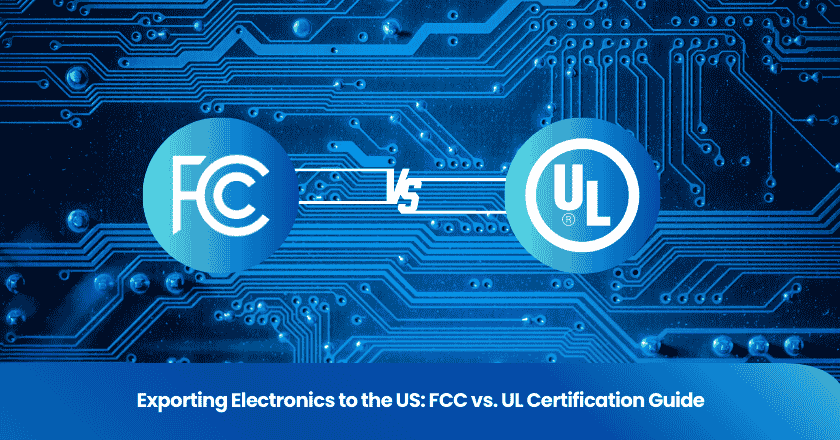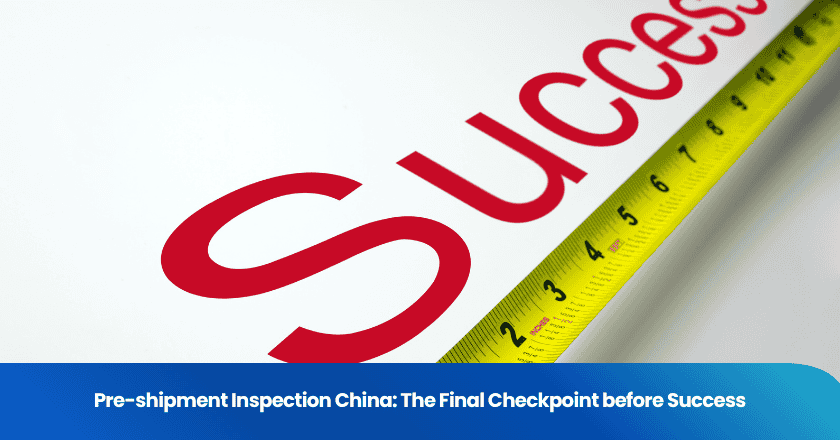
Imagine receiving a shipment only to find missing labels or incorrect packaging, putting your business at risk of costly delays and damaging your reputation. The most effective strategy for importers is using pre-shipment inspection China as your safeguard. You gain control over quality control and ensure your products meet all compliance requirements.
- Pre-shipment inspections verify correct certifications and export packaging, helping you avoid customs delays.
- Even minor paperwork errors can cause significant holdups or fines.
By following clear steps and staying proactive, you set yourself up for successful importing and protect your brand from preventable mistakes.
Pre-shipment Inspection China Overview
What Is Pre-shipment Inspection
You need to understand the foundation of pre-shipment inspection before you can manage your supply chain effectively. Pre-shipment inspection is a system that Chinese authorities use to ensure quality control and compliance with specifications before goods leave the country. The AQSIQ (General Administration of Quality Supervision, Inspection and Quarantine) oversees these inspections. Importers must often provide inspection certificates from authorized agencies, especially for high-risk items.
| Aspect | Description |
|---|---|
| Definition | Pre-shipment inspection is a system implemented by Chinese authorities to ensure quality control and compliance with specifications before goods are shipped. |
| Procedures | Importers must provide inspection certificates issued by authorized agencies before shipping goods, especially for high-risk items. |
| Regulatory Body | The AQSIQ (General Administration of Quality Supervision, Inspection and Quarantine) oversees these inspections. |
A typical pre-shipment inspection in China involves several key steps:
1. Inspection planning, where you agree on the scope, standards, and criteria, including sampling plans.
2. On-site inspection, which evaluates product quality, quantity, packaging, and labeling at the manufacturing site.
3. The inspection report, which details findings, includes photographs, and recommends corrective actions.
4. Decision-making, where you choose to accept, reject, or request adjustments based on the inspection findings.
Why It Matters
You face many risks when importing goods from China. Pre-shipment inspection helps you avoid costly mistakes and ensures your products meet both your requirements and international standards. The process confirms product specifications, tests sample quality, verifies packaging and labeling, and checks that the correct quantity is ready for shipment.
| Standard Type | Description |
|---|---|
| Contract Requirements and Product Specifications | PSI is conducted according to purchase contracts and client-provided product specifications to ensure all goods meet the agreed standards before shipment. |
| International Standards (ISO, IEC, etc.) | PSI references relevant international standards, such as ISO 9001 and IEC 61000, depending on the industry. |
| AQL Standards | PSI often employs AQL standards to determine the acceptable defect ratios. |
Tip: Pre-shipment inspection protects your business by identifying defects, incorrect specifications, or packaging issues before shipment. This process minimizes risks and enhances consumer trust in your product quality.
Importers request pre-shipment inspection to ensure goods meet customer specifications, maintain a positive reputation, and build trust with clients. Compliance checks during inspection help you avoid regulatory issues and delays. By using pre-shipment inspection China as your final checkpoint, you strengthen your supply chain and set your business up for success.
Key Steps In Pre-shipment Inspection
Factory Arrival
When your inspection team arrives at the factory, you set the stage for a thorough review of your shipment. The team checks the production environment, verifies the readiness of goods, and confirms that the correct quantities are available for inspection. You ensure that the products are finished and packed, not in the middle of production. This step prevents confusion and guarantees that the inspection covers the actual shipment, not unfinished items.
Your inspection team also reviews the factory’s storage conditions. Proper storage protects product quality and reduces the risk of damage before shipping. You confirm that the goods are separated from other batches to avoid mix-ups. This attention to detail helps you maintain strict quality control from the very beginning.
Sampling And Testing
Sampling and testing form the backbone of pre-shipment inspection. You rely on random sampling to get an accurate picture of the entire shipment. The inspection team selects samples according to internationally recognized standards, such as AQL (Acceptable Quality Limit). This method ensures that you do not overlook hidden defects or inconsistencies.
Functional testing follows sampling. The inspection team checks the selected products for performance, durability, and safety. You want to catch any issues before the goods leave the factory. Skipping this step can lead to substandard products reaching your customers.
To ensure accuracy and reliability during sampling and testing, you should:
1. Never skip the inspection. Missing this step can result in receiving poor-quality goods.
2. Define clear inspection criteria. This prevents subjective judgments and ensures consistency.
3. Choose a qualified inspection company. Accurate reporting depends on the expertise of your inspection team.
4. Review the inspection report carefully. You need to understand and address any issues found.
5. Schedule inspections early in the production cycle. Early checks give you time to correct problems.
6. Balance quantity and quality checks. Focusing only on numbers can let quality issues slip through.
Tip: Random sampling and functional testing help you prevent costly errors and protect your reputation as an importer.
Packaging And Label Check
Packaging and labeling play a critical role in compliance and customer satisfaction. Your inspection team examines packaging materials, verifies labeling accuracy, and checks that all markings meet regulatory and client requirements. Detailed quality control checklists guide this process, making sure nothing is missed.
A comprehensive checklist covers:
- Product specifications and customer requirements
- Measurements check
- Quantity and assortments check
- Packaging, arts and literature check
- Labels & markings, Logos check
- Aesthetic, surface and function check
- On-site safety test
You benefit from using independent third-party inspection agencies or sourcing agents. These professionals provide unbiased evaluations and ensure your shipment meets both local and international regulations. They detect defects early, prevent costly shipment errors, and help you build trust with your suppliers. The inspection team conducts thorough evaluations, verifies packaging and labeling, and checks all accompanying documents for compliance.
Independent third-party inspections offer strong quality assurance across industries. Their impartial approach helps you manage risks and maintain high product quality, especially in complex supply chains.
Note: A detailed inspection report from your inspection team gives you the information you need to make informed decisions before shipping.
By following these key steps in pre-shipment inspection China, you strengthen your quality control process and protect your business from preventable mistakes.
Strategies For Importers
Choosing Inspection Partners
Selecting the right inspection partner shapes your entire importing experience. You need a partner who understands your industry, communicates clearly, and adapts to your evolving needs.
Use the following table to evaluate potential inspection partners:
| Criteria | Importance | Tips for Assessment |
|---|---|---|
| Experience and Industry Expertise | Companies with deep experience understand unique challenges and standards. | Ask for case studies or references from clients in your sector. |
| Reputation and Reliability | A strong reputation reflects consistent performance and trustworthiness. | Check online reviews, testimonials, and industry awards. |
| Service Scope and Flexibility | Your needs may evolve, requiring a provider that offers a range of services. | Choose a company with comprehensive offerings. |
| Technology and Innovation | Tools like AI and real-time reporting enhance efficiency and accuracy. | Opt for tech-savvy firms if you value digital solutions. |
| Pricing and Transparency | Hidden fees can strain your budget. | Request detailed quotes and compare value, not just price. |
| Geographic Coverage | Proximity to suppliers ensures timely inspections. | Confirm the company’s reach across China’s manufacturing hubs. |
You should always verify the inspection partner’s credentials and request references. A reliable partner will provide transparent pricing and demonstrate a track record of successful pre-shipment inspection projects.
Setting Specifications
Clear product specifications form the backbone of effective quality control. You must define every detail to avoid misunderstandings and ensure the inspection team checks the right criteria. Follow these steps to set measurable and enforceable product specifications:
1. Develop a detailed checklist covering dimensions, material quality, functionality, and packaging standards.
2. Conduct a final audit from an independent inspection agency to verify quality and assist with documentation for customs.
3. Review all necessary quality documentation, such as CE, FCC, and RoHS certifications, to ensure compliance.
A comprehensive Product Specification Sheet helps you communicate requirements to the factory. Include technical drawings, a Bill of Materials, color and finish standards, and performance testing criteria. Consistent application of these criteria ensures product quality and reduces the risk of disputes.
Tip: Always provide your inspection team with the latest version of your product specifications. This practice prevents confusion and ensures accurate inspection results.
Scheduling Inspections
Timing is critical for pre-shipment inspection China. Schedule inspections when production is complete but before shipment leaves the factory. This approach allows your inspection team to review finished goods and catch any issues before they reach your customers.
Coordinate with your supplier and inspection team to set inspection dates that fit your production timeline. Early scheduling gives you flexibility to address problems without delaying shipment. Confirm that the inspection team has access to the entire shipment and all relevant documentation.
Note: Last-minute inspections often lead to rushed reviews and missed defects. Plan ahead to maximize the effectiveness of your inspection process.
Communication Tips
Effective communication bridges language and cultural gaps, ensuring your requirements are understood and followed.
Use these strategies to enhance communication with suppliers and inspectors:
| Strategy | Description |
|---|---|
| Bilingual and Bicultural Teams | These teams ensure accurate translation of technical requirements and can interpret cultural cues that may be missed by foreign buyers. |
| Clear Communication of Technical Specifications | Ensures that all specifications are understood without ambiguity, reducing the risk of errors. |
| Understanding Cultural Nuances | Recognizing cultural aspects, such as the concept of 'saving face', helps in managing expectations and communication effectively. |
You can also use practical tools and templates to streamline communication:
- RFQ Template: Standardizes your quotation requests for clarity.
- Supplier Onboarding Checklist: Simplifies new supplier setup and ensures compliance.
- Factory Visit Checklist: Organizes your evaluation of production quality and capacity.
Employ bilingual local inspectors to bridge communication gaps. Visual tools, such as sketches and prototypes, help clarify complex requirements. Third-party quality control services can mediate and clarify issues, ensuring suppliers understand the inspection report and take corrective action.
Tip: Clarity in communication prevents misinterpretation. Bicultural understanding helps you convey context and intent, while visual aids reinforce your expectations.
By following these strategies, you empower your inspection team, strengthen supplier relationships, and ensure your pre-shipment inspection delivers the results you need.
Pre-shipment Inspection: Common Pitfalls
Mistakes To Avoid
You can avoid many costly setbacks by recognizing the most frequent mistakes during pre-shipment inspection China. Many importers fall into these traps:
1. Skipping quality inspections exposes you to hidden defects, which often result in expensive returns.
2. Choosing the cheapest supplier may seem attractive, but low prices often signal low standards and hidden risks.
3. Unclear product specs create miscommunication, leading to inconsistent product quality.
4. Ignoring compliance and certifications can trigger customs fines and shipment delays.
5. Weak contracts leave you unprotected when problems arise, as there are no written terms to enforce.
These mistakes can have serious financial consequences.
The table below highlights what you risk if you overlook key steps:
| Financial Consequence | Description |
|---|---|
| Costly Returns | Overlooking inspection can lead to products being returned, incurring costs. |
| Customer Complaints | Issues with product quality can result in dissatisfaction and complaints. |
| Fines | Ignoring compliance can lead to significant financial penalties. |
| Shipment Seizures | Non-compliance may result in goods being seized by authorities. |
| Legal Issues | Overlooking regulations can lead to legal challenges and associated costs. |
| Delays in Production Timeline | Poor management can affect product launches and promotional events. |
| Misunderstandings due to Poor Communication | Ineffective communication can lead to quality issues and delays. |
Tip: You protect your business and reputation by addressing these pitfalls early in your process.
Solutions
You can resolve common inspection challenges by following proven strategies. When your inspection team uncovers defects, take these steps:
- For electronics, if you find a high failure rate, use quality sorting services to separate functional units and require your supplier to rework defective items.
- In apparel, if you notice color variations, sort out defective garments and arrange for re-dyeing or repairs before shipping.
- For hard goods like automotive parts, partner with sorting companies for on-site inspections and remove non-compliant items, then improve supplier controls.
To implement corrective actions, follow this process:
1. Assess the defects by recording details and evidence.
2. Notify your supplier and buyer with a detailed report about the defects and possible causes.
3. Determine the root cause by reviewing production processes and materials.
4. Explore solutions such as reworking, repairing, replacing defective products, or negotiating price reductions.
5. Re-inspect corrected products to ensure they meet your quality control standards.
6. Update documentation to keep a clear record of inspections and actions taken.
7. Prevent future defects by conducting supplier audits and enhancing your inspection team’s quality control procedures.
Note: A proactive approach with your inspection team ensures you catch problems early and maintain high product quality throughout your supply chain.
Maximizing Value
Cost-Effectiveness
You can achieve cost-effective pre-shipment inspections in China by following a structured approach. These steps help you maintain quality without overspending:
1. Pre-Production Inspection: Check materials before manufacturing begins. This step ensures that your supplier uses the correct components from the start.
2. During Production Checks: Inspect products at different stages of production. Early detection of issues saves time and money.
3. Final Random Inspection: Examine finished goods for quality compliance. This step helps you catch defects before shipment.
4. Loading Supervision: Oversee the packing and loading process. You confirm that only approved products ship and that packaging meets your standards.
Investing in these inspections reduces the risk of costly mistakes. While you pay an upfront fee, you avoid larger expenses from defective goods or shipping errors. This proactive approach protects your bottom line and keeps your supply chain running smoothly.
Supplier Relationships
Strong supplier relationships support long-term success. You build trust and cooperation by setting clear expectations and maintaining open communication. The following strategies help you foster productive partnerships:
| Strategy | Description |
|---|---|
| Define Clear Specifications | Provide detailed documentation and samples to clarify your quality requirements. |
| Conduct Regular Inspections | Monitor production to catch issues early and ensure consistency. |
| Engage Third-Party Inspection | Use independent experts for unbiased quality checks. |
| Maintain Communication | Keep open channels to address concerns and share feedback promptly. |
| Continuous Improvement | Work with suppliers to implement corrective actions and prevent future issues. |
| Factory Audits | Verify manufacturing capabilities and compliance through regular audits. |
Continuous Improvement
Feedback from pre-shipment inspections drives ongoing improvement in your supply chain. You identify defects, minimize risks, and manage supplier performance more effectively.
Tip: Use inspection reports to track trends, address recurring issues, and set new quality benchmarks. This cycle of feedback and improvement strengthens your import process over time.
You can optimize your pre-shipment inspection in China by focusing on the essentials.
- Confirm product quantity, packaging, and labeling.
- Check for defects and verify product function.
- Schedule inspections early to prevent delays.
To improve outcomes, follow these steps:
1. Define your requirements and inspection stages.
2. Shortlist experienced providers.
3. Set clear expectations and timelines.
4. Review inspection reports and act promptly.
Proactive planning, clear communication, and thorough follow-up will help you achieve import success. Start implementing these strategies today to protect your business and reputation.
FAQ
What is the best time to schedule a pre-shipment inspection in China?
You should schedule your inspection after production finishes but before shipment. This timing allows you to catch defects and request corrections without delaying delivery.
How do you choose a reliable inspection company in China?
Look for companies with strong industry experience, clear communication, and transparent pricing. Ask for references and review their sample reports to ensure quality.
What documents do you need for a pre-shipment inspection?
You need a purchase order, product specifications, packing list, and any required compliance certificates. Providing these documents helps the inspection team verify your requirements.
Can you attend the inspection in person?
Yes, you can attend the inspection. Many importers join the process to observe quality checks and communicate directly with the inspection team.
Grow your business with TradeAider Service
Click the button below to directly enter the TradeAider Service System. The simple steps from booking and payment to receiving reports are easy to operate.

